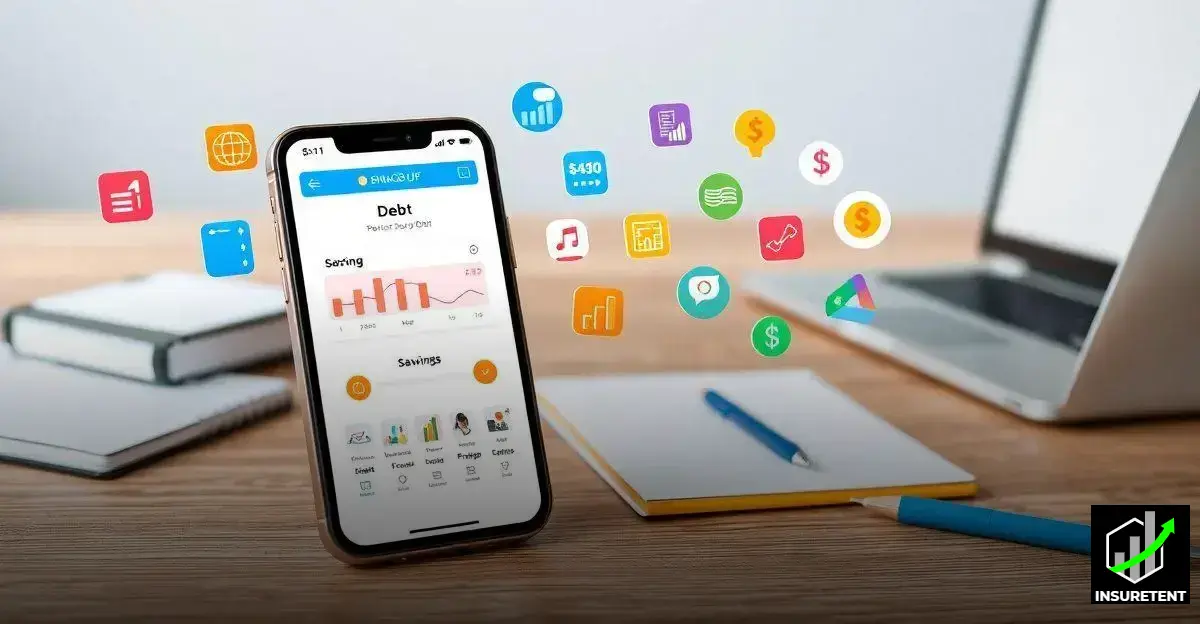In today’s financial landscape, a debt management application can be your best ally in regaining control of your finances.
This tool empowers you to track expenses, create budgets, and manage debts effectively.
With various options available, understanding what these applications offer is crucial.
What is a Debt Management Application?
A debt management application is designed to help individuals manage their personal finances more effectively.
It provides tools to track spending, monitor debts, and create budgets, making it easier for users to regain control over their financial situations.
Features:
Expense Tracking: Users can log their daily expenditures and categorize them to understand where their money goes.
Debt Tracker: Allows users to input their debts and see a payment schedule, highlighting the quickest way to pay off debts.
Financial Education Resources: Offers articles, tips, and tutorials on managing debts effectively, contributing to long-term financial stability.
Overall, a debt management application serves as a practical solution for anyone looking to improve their financial health, offering a roadmap to help users achieve their financial goals.
Key Features to Look for in a Debt Management Application

When looking for a debt management application, there are several key features that can make the difference in managing your finances effectively.
First, choose an application that provides robust expense tracking to monitor all your spending habits.
This feature will allow you to categorize expenses and see where you can cut back.
Second, the application should include a debt tracker that enables you to list all your debts, set repayment schedules, and see your progress over time.
Budgeting tools are crucial as well; they help you allocate your income towards different expenses and savings goals.
Another important feature is financial education resources, which give you access to articles and tips about managing debt.
Additionally, look for an application with secure data management to ensure your sensitive financial information is protected.
Lastly, an intuitive user interface will simplify the process, making it easier to engage with your financial data daily.
Benefits of Using a Debt Management Application
Using a debt management application offers a range of benefits that can significantly improve your financial health.
One of the main advantages is that it provides a straightforward way to track your expenses, enabling you to see where your money goes each month.
This visibility helps you identify spending habits that may be detrimental to your financial goals.
Furthermore, such applications allow you to easily manage multiple debts by aggregating them in one place.
This can lead to better organisation and less stress when it comes time to make payments.
Additionally, many debt management apps offer payment reminders, which help you avoid late fees and stay on top of your financial obligations.
Another significant benefit is access to financial education tools that provide tips and strategies tailored to managing debt.
With these resources, users become more financially literate, which is essential for long-term success.
Finally, by regularly using a debt management application, many users report a feeling of greater control over their finances, leading to improved confidence in their budgeting and decision-making abilities.
How to Choose the Right Debt Management Application

Choosing the right debt management application is crucial for effectively handling your finances.
Start by assessing your specific financial needs.
Do you want to focus on debt tracking, creating budgets, or both? Understanding what you need will guide your decision.
Next, look for applications with a user-friendly interface. If you find it difficult to navigate, you are less likely to use it regularly.
Compatibility is another important factor. Ensure the application works on your preferred devices, whether it’s a smartphone, tablet, or computer.
You should also consider the security features. Make sure that your financial data is protected through encryption and secure logins.
Many applications offer a free trial period; utilise this to test different options before committing.
Additionally, check for customer reviews and ratings to gain insights into the experiences of other users.
Lastly, consider the cost of the application. While some are free, others may charge for premium features.
Weigh the benefits against the costs to find the best fit for your budget.
Comparison of Popular Debt Management Applications
When comparing popular debt management applications, it is essential to consider various features to determine which one suits your needs best.
For instance, Mint is well-known for its free expense tracking tools, making it ideal for budgeting.
It allows users to connect their bank accounts, automatically categorising expenses and providing a comprehensive view of their finances.
On the other hand, Debt Payoff Planner focuses specifically on helping users pay down their debts by allowing for detailed debt tracking and goal setting.
This application can motivate users with visual aids that show how close they are to becoming debt-free.
Another notable application is You Need A Budget (YNAB), which offers proactive budgeting advice and is renowned for teaching users how to manage their money better.
It costs a monthly fee, but many find the investment worthwhile.
Lastly, Credit Karma offers features that not only help manage debts but also allow users to monitor their credit scores.
By evaluating the features, functionalities, and costs of these applications, users can make an informed choice.
This helps them select the debt management app that best fits their unique financial situations.
Tips for Effectively Using a Debt Management Application

To effectively use a debt management application, start by setting realistic financial goals.
Define what you want to achieve, whether it’s paying off a specific debt or sticking to a budget.
Next, regularly input your financial data, including income and expenses, to keep your information up to date.
This practice will help the application provide accurate insights and recommendations.
It is also essential to review your spending habits periodically.
By monitoring your habits, you can identify areas where you might overspend and make adjustments accordingly.
Don’t forget to take advantage of the budgeting tools offered by the application; these can help you allocate funds more effectively.
Engaging with the application’s educational resources can enhance your understanding of personal finance, resulting in better decision-making.
Lastly, be patient and consistent; improving your financial situation takes time, but with regular use of the application, you will likely see positive changes over time.
Common Mistakes to Avoid with Debt Management Applications
When using a debt management application, there are several common mistakes that users should avoid to ensure success.
One major error is not entering data regularly. Failing to update your income and expenses can lead to an inaccurate financial picture.
Another mistake is setting unrealistic goals. It’s essential to set achievable targets to stay motivated.
Users often overlook the educational resources available within the app; these tools can provide tips for better financial management.
Additionally, many individuals forget to review their progress frequently, which is vital to stay on track.
Neglecting to use notifications for payment reminders can lead to missed payments and additional fees.
Lastly, a common oversight is not utilising all the features the app offers.
Familiarising yourself with the various tools can enhance your overall experience and help you manage your debt more effectively.
Getting Started with Your Debt Management Application

The adoption of Artificial Intelligence (AI) can bring numerous benefits to small businesses, from automating repetitive tasks to personalizing customer service and analyzing data.
AI implementation should be done gradually, identifying areas that can benefit immediately and launching pilot projects to assess the effectiveness of these solutions.
Success stories across various sectors demonstrate how AI can be a powerful tool to drive growth and improve operational efficiency.
With AI, small businesses can not only compete on equal footing with larger companies but also innovate and create new opportunities in the market.
Therefore, don’t underestimate the potential of AI to revolutionize your business.
In Conclusion: Managing Your Debt Effectively
Using a debt management application can significantly improve your financial health by providing tools to track spending, manage debts, and budget effectively.
By choosing the right application and using it consistently, you can set achievable goals, stay organised, and gain a better understanding of your finances.
Avoiding common mistakes and applying the tips shared will further enhance your experience, making your journey towards financial freedom smoother and more manageable.
Ultimately, committing to using the right tools consistently is crucial for achieving your financial goals and transforming your money management.
